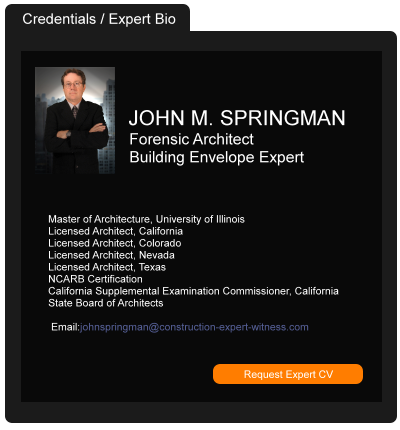The Choice Is Yours – Or Is It? Anti-Choice-of-Laws Statutes Applicable to Construction Contracts
October 03, 2022 —
Tiffany Raush & Tanya McGill - ConsensusDocsDuring contract negotiations and review, the parties make choices about what risks they are willing to accept and at what cost. But one often overlooked choice—the choice of law applicable to the contract—can undermine carefully negotiated construction contracts and expose contractors to risks they never intended to accept.
Choice-of-law provisions are standard provisions in most contracts. These provisions allow the parties to the contract to decide which state’s laws will apply to their contract. Often, choice-of-law in the construction contract is the law of the state where the project is located and there will be no issue. But, if the project is located in an unfamiliar, the owner or prime contractor may prefer the laws of the state where the owner or prime contractor is primarily located over the laws of the state where the project is located.
Generally, most states will enforce the parties’ choice of law in a contract. But that may not be the case for construction contracts. States like Texas, California, New York, Florida, Louisiana, and others may prohibit parties from agreeing to the application of another state’s law for construction projects in their states.
Reprinted courtesy of
Tiffany Raush, Jones Walker LLP (ConsensusDocs) and Tanya McGill, University of Mississippi School of Law Student, 2023 Graduate (ConsensusDocs)
Ms. Raush may be contacted at traush@joneswalker.com
Read the court decisionRead the full story...Reprinted courtesy of
Executive Insights 2024: Leaders in Construction Law
August 05, 2024 —
Construction ExecutiveThe key risks that should always be taken into account when a contract is signed are risks associated with uncompensated delays and cost increases. Provisions relating to the scope of work deserve significant attention to help minimize these risks. Defining the scope of work is often put on the backburner while parties focus on negotiating the rest of the terms and conditions of the contract. And when these scopes are inserted, they are often not closely reviewed by attorneys who tend to defer to project personnel on scope. These situations can lead to costly disputes.
Instead, make sure: (1) the correct plans and specifications have been referenced in the contract; (2) an attorney or his/her business counterpart is familiar with relevant specifications; (3) the exhibit containing the assumptions and clarifications is clearly written, has been coordinated with language in the body of the contract and can be clearly understood by attorneys and business people beyond the preconstruction personnel who drafted them; and (4) the contract addresses the order of precedence in the event of a conflict between or among contract provisions (including exhibits). With regard to specifications referenced above, an attorney review is advised because many specification sections, including submittal sections, change order sections, payment provisions and construction progress documentation sections, regularly vary from the negotiated sections of the actual contract. Contractors also unwittingly accept design risk through performance specifications, and the accompanying obligations and risks are underestimated by those tasked with the initial review of those documents. In sum, a clear scope is as important as clear terms and conditions.
Reprinted courtesy of
Construction Executive, a publication of Associated Builders and Contractors. All rights reserved.
Read the court decisionRead the full story...Reprinted courtesy of
DoD Testing New Roofing System that Saves Energy and Water
October 08, 2014 —
Beverley BevenFlorez-CDJ STAFFBuilder reported that the Department of Defense (DoD) is hosting a new “dynamic roofing system, installed at the Security Forces Building at Goodfellow Air Force Base in San Angelo, Texas,” which “uses a combination of technologies that heat and cool air and water, produce electricity, and collect rainwater.” If the project is successful, it “could be replicated at thousands of DoD buildings throughout the country in the near future.”
Builder described the process: “A retrofitted metal roof is installed over the existing roof, which creates a cavity between the existing and new roofs. Within that cavity insulation, solar thermal heating systems and cooling of air and water for the building can be installed. The roofing, insulation, hydronic solar thermal systems, engineered air pathways, and photovoltaic cells are designed to work symbiotically.”
Read the court decisionRead the full story...Reprinted courtesy of
Second Circuit Denies Petitions for Review of EPA’s Final Regulations to Establish Requirements for Cooling Water Intake Structures
August 20, 2018 —
Anthony B. Cavender - Gravel2GavelOn July 23, 2018, the U.S. Court of Appeals for the Second Circuit decided the case of Cooling Water Intake Structure Coalition v. EPA. Environmental conservation groups and industry associations petitioned for review of a final rule promulgated by the U.S. Environmental Protection Agency (EPA) pursuant to section 316(b) of the Clean Water Act (CWA), establishing requirements for cooling water intake structures at existing facilities. Denying the petitions for review, the Court of Appeals summarized:
“Because we conclude, among other things, that both the Rule and the biological opinion are based on reasonable interpretations of the applicable statutes and sufficiently supported by the factual record, and because the EPA 3 gave adequate notice of its rulemaking, we DENY the petitions for review.”
This is a significant CWA and Endangered Species Act (ESA) decision involving the operation of major industrial facilities requiring the daily use of large amounts of water taken from adjacent bodies of water.
Read the court decisionRead the full story...Reprinted courtesy of
Anthony B. Cavender, PillsburyMr. Cavender may be contacted at
anthony.cavender@pillsburylaw.com
The 411 on the New 415 Location of the Golden State Warriors
June 10, 2015 —
Garret Murai – California Construction Law BlogYou can feel the buzz here in the Bay Area as the Golden State Warriors enter Game 4 of the NBA Playoffs following a 35 point upset over the Houston Rockets on Saturday, and a chance tonight to sweep the series and head to the NBA Finals for the first time since 1975.
Formerly the Philadelphia Warriors from 1946 to 1962, and later the San Francisco Warriors from 1962 to 1971, the Golden State Warriors have played in Oakland’s currently named Oracle Arena since 1966 (except for one year when they played in San Jose while the Oracle Arena was being remodeled).
Starting next year, however, construction will begin on the Warriors’ new stadium in the Mission Bay area of San Francisco with completion scheduled for the 2018-2019 season. Although details are just emerging – and even the conceptual plans have changed after some said that the initial design looked like a toilet – here’s the 411 we know on the new 415 location of the Warriors:
- The cost of the new arena is estimated to be $1 billion.
Read the court decisionRead the full story...Reprinted courtesy of
Garret Murai, Wendel Rosen Black & Dean LLPMr. Murai may be contacted at
gmurai@wendel.com
Business Risk Exclusions Do Not Preclude Coverage
November 13, 2013 —
Tred Eyerly — Insurance Law HawaiiThe court rejected the insurer's arguments that the business risk exclusions barred coverage for a contractor. Gen. Cas. Co. of Wisconsin v. Five Star Bldg. Corp., 2013 U.S. Dist. LEXIS 134122 (D. Mass. Sept. 19, 2013).
Five Star was hired by the University of Massachusetts to upgrade the ventilation (HVAC) system on a portion of a building. The large majority of the work involved work in the interior of the building, but a small portion required installation of duct work and supports on top of the roof of the complex. Five Star also penetrated the roof at numerous locations to install supports for duct work and other rooftop structures for the ventilation system. Other subcontractors then secured supports to the concrete roof deck and installed permanent patches where Five Star had penetrated the roofing system.
On same days, Five Star could not accomplish the process in a single day after penetrating the roof. It would install temporary patches until the next day. This was the only work on the roof performed by Five Star.
Read the court decisionRead the full story...Reprinted courtesy of
Tred EyerlyTred Eyerly can be contacted at
te@hawaiilawyer.com
Beyond the Statute: How the Colorado Court Upheld Modified Accrual in Construction Contracts
November 13, 2023 —
Hal Baker - Colorado Construction Litigation BlogIn a case of first impression, the First Division of the Colorado Court of Appeals recently reviewed whether parties may contractually alter the accrual time established by Colorado’s statute of limitations for construction defect actions, C.R.S. § 13-80-104, in South Conejos Sch. Dist. RE-10 v. Wold Architects, Inc., 2023 COA 85 (2023), decided on September 21, 2023. The Court held that sophisticated parties may contractually alter the accrual time standards, enlarging the accrual time as was the issue in this case. Notably, the Court’s decision was made in the context of commercial construction, not residential.
The issue in South Conejos Sch. Dist. RE-10 arose from the construction of a school in Antonito, Colorado. Prior to construction, the South Conejos School District RE-10 (the “School District”) and Wold Architects, Inc. (“Wold”) entered a contract that provided:
Unless a longer period is provided by law, any action against [Wold] brought to recover damages for deficiency in the design, planning, supervision, inspection, construction or observation of construction or for injury to person or property shall be brought within two years after the claim for relief arises and is discovered by [the District]; … “Discovered” as used herein means detection and knowledge by [the District] of the defect in the improvement that ultimately causes the injury, when such defect is of a substantial or significant nature.
Read the court decisionRead the full story...Reprinted courtesy of
Hal Baker, Higgins, Hopkins, McLain & Roswell, LLCMr. Baker may be contacted at
baker@hhmrlaw.com
BHA has a Nice Swing: Firm Supports CDCCF Charity at 2014 WCC Seminar
April 29, 2014 —
Beverley BevenFlorez-CDJ STAFFStop by the Bert L. Howe & Associates (BHA) booth at the 2014 West Coast Casualty Construction Defect Seminar at the Disneyland Hotel on May 15th and 16th, and Sink A Putt For Charity!
This year, seminar attendees and would-be duffers who try their hand at the golf putting game at the Bert L. Howe & Associates booth will not only have the chance to win a free gift card, they’ll also have the opportunity to help raise funds for a very important cause, the Construction Defect Community Charitable Foundation (CDCCF).
Throughout this year’s seminar, with every hole-in-one made at their booth, BHA will make a $25.00 cash donation in the golfer’s name to the CDCCF.
Bert L. Howe & Associates strongly supports the goals and principles of the CDCCF, and is honored to assist the foundation in fulfilling its mandate of assisting those in the construction defect community who are in need.
Read how the CDCCF assists the construction defect community...
Read the court decisionRead the full story...Reprinted courtesy of


































































